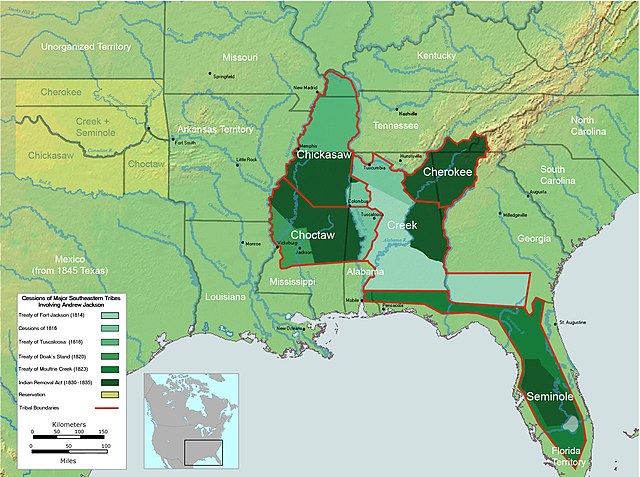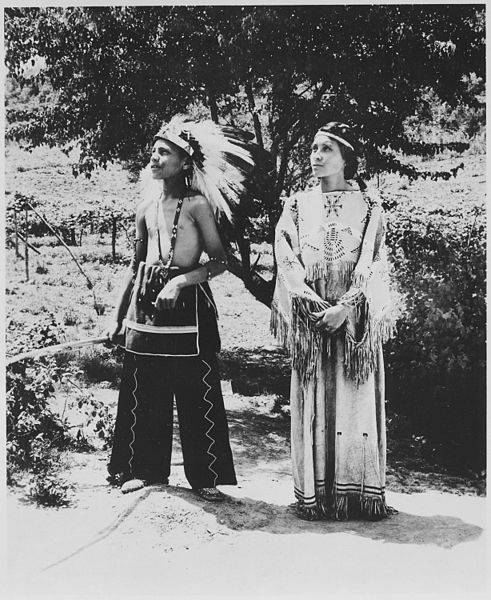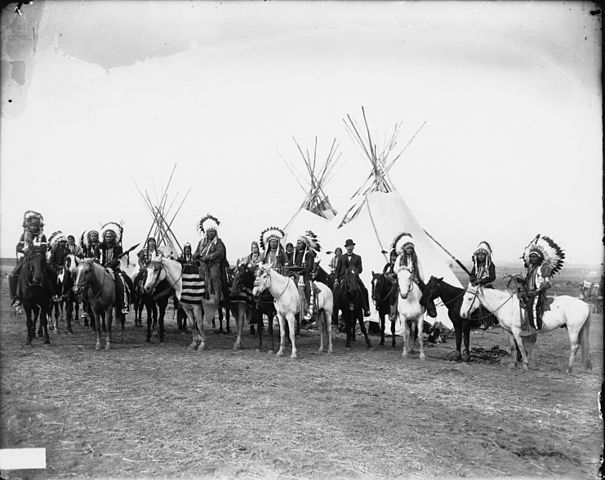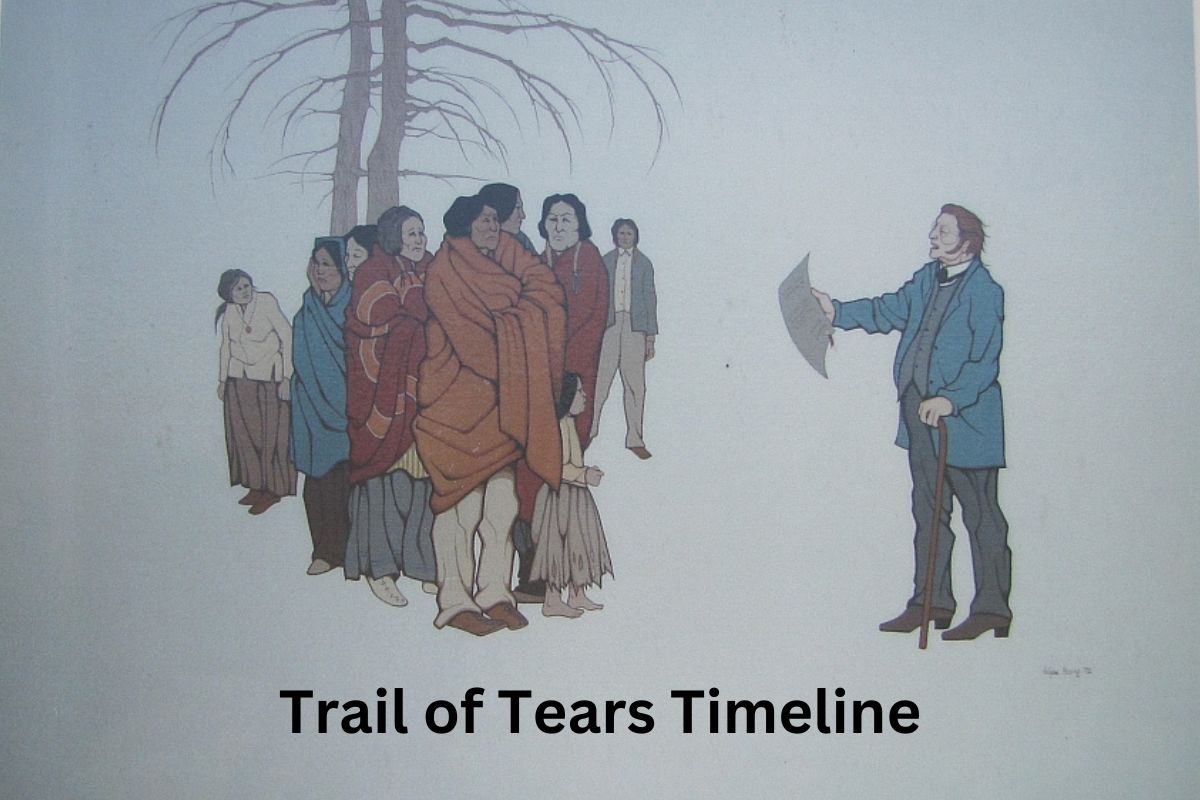The Trail of Tears stands as a haunting chapter in American history, representing the forced relocation and immense suffering endured by Native American tribes, primarily the Cherokee Nation, in the 1830s.
Driven by the insatiable appetite for land and resources, the United States government implemented a policy of Indian removal, uprooting indigenous communities from their ancestral lands in the southeastern United States and forcibly marching them westward to designated Indian Territory in present-day Oklahoma.
This tragic episode, marked by displacement, hardship, and loss of life, unfolded against the backdrop of political decisions, legal battles, and the indomitable spirit of the Native American people.
By examining the timeline of events leading up to and during the Trail of Tears, we gain a deeper understanding of the profound impact this historical injustice had on both Native American tribes and the nation as a whole.
| Year | Event |
|---|---|
| 1828 | Gold is discovered in Cherokee territory |
| 1829 | Andrew Jackson becomes President, supports Indian removal |
| 1830 | Indian Removal Act is passed by U.S. Congress |
| 1832 | Worcester v. Georgia Supreme Court case |
| 1835 | Treaty of New Echota is signed |
| 1838 | U.S. Army begins forced removal of Cherokee people |
| 1838-1839 | Trail of Tears: Forced march of Cherokee and other tribes |
| 1839 | Forced removal of Cherokee people completed |
| 1846 | Cherokee Nation establishes new capital in Tahlequah, Oklahoma |
Timeline of Trail of Tears
1828 – Gold is discovered in Cherokee territory
In 1828, gold was discovered in northeastern Georgia, which was part of Cherokee territory. The discovery led to a sudden influx of white settlers into the area, creating conflicts and increasing pressure on the Cherokee people to relinquish their lands.
The gold rush further intensified the desire of white settlers to obtain Native American lands and contributed to the growing sentiment of removing Native American tribes from their ancestral territories.

1829 – Andrew Jackson becomes President and supports Indian removal
In 1829, Andrew Jackson took office as the seventh President of the United States. He had long held the belief that Native American tribes should be forcibly removed from their lands to make way for white settlement.
Jackson’s administration actively pursued policies that aimed to relocate Native American tribes to lands west of the Mississippi River.
He pushed for the passage of the Indian Removal Act, which would grant the federal government the authority to negotiate treaties for the removal of tribes.
1830 – Indian Removal Act is passed by U.S. Congress
In 1830, the Indian Removal Act was passed by the United States Congress and signed into law by President Andrew Jackson.
This act authorized the federal government to negotiate treaties with Native American tribes, exchanging their lands in the southeastern United States for lands in the west, specifically Indian Territory (present-day Oklahoma).
The act provided funds for the removal process and set the stage for the forced removal of Native American tribes from their ancestral lands.
The Indian Removal Act was met with significant opposition, both from within Congress and among certain segments of the American population, but it nevertheless passed and laid the legal foundation for the forced removals that would follow.
1832 – Worcester v. Georgia Supreme Court case
The Worcester v. Georgia case was a landmark Supreme Court decision in 1832 that had significant implications for Native American sovereignty. The case revolved around the Cherokee Nation’s right to self-govern and control their own lands.
The Supreme Court, under Chief Justice John Marshall, ruled that the state of Georgia could not enforce its laws within Cherokee territory. The decision affirmed the sovereignty of the Cherokee Nation and recognized their rights to their ancestral lands.
However, President Andrew Jackson reportedly ignored the ruling, as he was a proponent of Indian removal and did not support the Court’s decision.
1835 – Treaty of New Echota is signed
The Treaty of New Echota, signed in 1835, was a controversial agreement between a small faction of Cherokee leaders and the United States government.
The treaty was not representative of the majority of Cherokee people, as it was negotiated and signed without their consent or the approval of the Cherokee National Council.
It stipulated that the Cherokee Nation would cede their lands in the southeastern United States in exchange for compensation and relocation to Indian Territory (present-day Oklahoma).
The signing of the treaty triggered a series of events that led to the forced removal of the Cherokee people from their ancestral lands.

1838 – U.S. Army begins forced removal of Cherokee people
In 1838, the United States Army, under the command of General Winfield Scott, began the forced removal of the Cherokee people from their lands. This event, known as the Trail of Tears, marked a tragic chapter in American history.
The Cherokee people were forcibly uprooted from their homes, with little time to prepare or gather their belongings. The journey was treacherous, as they were subjected to harsh weather conditions, lack of proper food and shelter, and the spread of diseases.
Many Cherokee people suffered and died during the forced march to Indian Territory.
The U.S. Army, often employing coercion and violence, enforced the removal policy, forcibly removing the Cherokee and other Native American tribes from their ancestral lands.
The government’s actions during this period were in direct violation of the sovereignty and rights of Native American tribes, leading to immense suffering and loss of life.

1838-1839 – Trail of Tears: Forced march of Cherokee and other tribes
The Trail of Tears refers to the forced march of the Cherokee and other Native American tribes from their homelands to Indian Territory. It occurred between 1838 and 1839.
During this time, thousands of Cherokee people, along with members of the Choctaw, Creek, Chickasaw, and Seminole tribes, among others, were forcibly removed from their lands.
The journey was grueling and devastating, spanning hundreds of miles on foot, horseback, or by wagon.
1839 – Forced removal of Cherokee people completed
By 1839, the forced removal of the Cherokee people from their ancestral lands was largely completed. The journey to Indian Territory (present-day Oklahoma) had been a harrowing experience for the Cherokee, marked by immense suffering, death, and loss.
The Cherokee faced brutal conditions during the forced march, including exposure to severe weather, inadequate food and supplies, and the spread of diseases such as dysentery and smallpox.
It is estimated that approximately 4,000 Cherokee people died during the Trail of Tears, representing a significant loss of life and culture.
1846 – Cherokee Nation establishes new capital in Tahlequah, Oklahoma
In 1846, the Cherokee Nation, having completed the forced relocation to Indian Territory, established its new capital in Tahlequah, Oklahoma. Tahlequah became the political and cultural center for the Cherokee people in their new territory.
The Cherokee Nation worked to rebuild their communities, institutions, and government structures in the face of immense adversity. They sought to preserve their language, traditions, and sovereignty in their new homeland.
Despite the challenges and trauma inflicted upon them, the Cherokee people gradually reestablished themselves in Indian Territory. They formed a government, developed a written constitution, and implemented laws to protect their rights and territories.
Tahlequah became a symbol of resilience and the Cherokee Nation’s determination to rebuild their lives after the forced removal.
